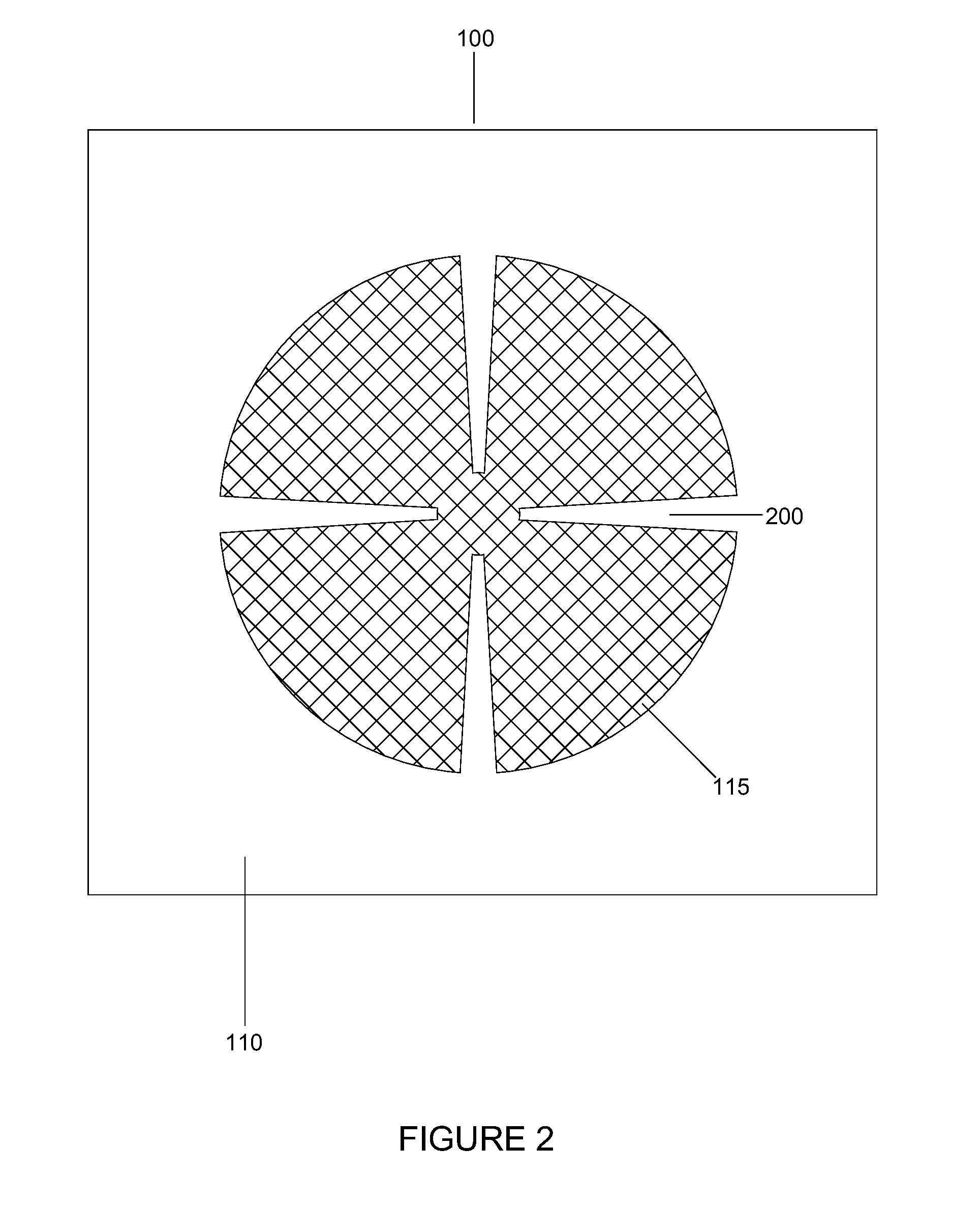Compact microstrip patch antenna
a patch antenna and compact technology, applied in the direction of elongated active element feed, substantially flat resonant elements, resonance antennas, etc., can solve the problems of narrow bandwidth, low efficiency, and low efficiency of conventional microstrip patch antennas, so as to reduce internal losses (q) of the antenna, reduce the effective radiating current path of the patch, and reduce the effect of patch effective siz
- Summary
- Abstract
- Description
- Claims
- Application Information
AI Technical Summary
Benefits of technology
Problems solved by technology
Method used
Image
Examples
Embodiment Construction
[0021]Referring to FIG. 1, a side sectional view of an exemplary microstrip patch antenna 100 according to principles of the invention is shown. The antenna 100 is comprised of a base conductor layer (the groundplane) 105, a dielectric spacer (the substrate) 110, and a signal conductor layer (the microstrip) 115. The exemplary microstrip 115, which may be fashioned into a circular geometry as illustrated in FIG. 2, is called the “patch”.
[0022]The exemplary microstrip patch antenna 100 may be fed by a variety of devices now known or hereafter developed. Such devices can be classified into two categories-contacting and non-contacting. In a contacting scheme, a connecting element, such as a microstrip line or coaxial connector 120 (as shown in FIG. 1), couples the groundplane 105 and patch 115. The inner conductor of the coaxial connector 120 may extend through the dielectric and connect to the radiating patch, while the outer conductor may be connected to the ground plane 105. In a no...
PUM
 Login to View More
Login to View More Abstract
Description
Claims
Application Information
 Login to View More
Login to View More - R&D
- Intellectual Property
- Life Sciences
- Materials
- Tech Scout
- Unparalleled Data Quality
- Higher Quality Content
- 60% Fewer Hallucinations
Browse by: Latest US Patents, China's latest patents, Technical Efficacy Thesaurus, Application Domain, Technology Topic, Popular Technical Reports.
© 2025 PatSnap. All rights reserved.Legal|Privacy policy|Modern Slavery Act Transparency Statement|Sitemap|About US| Contact US: help@patsnap.com



